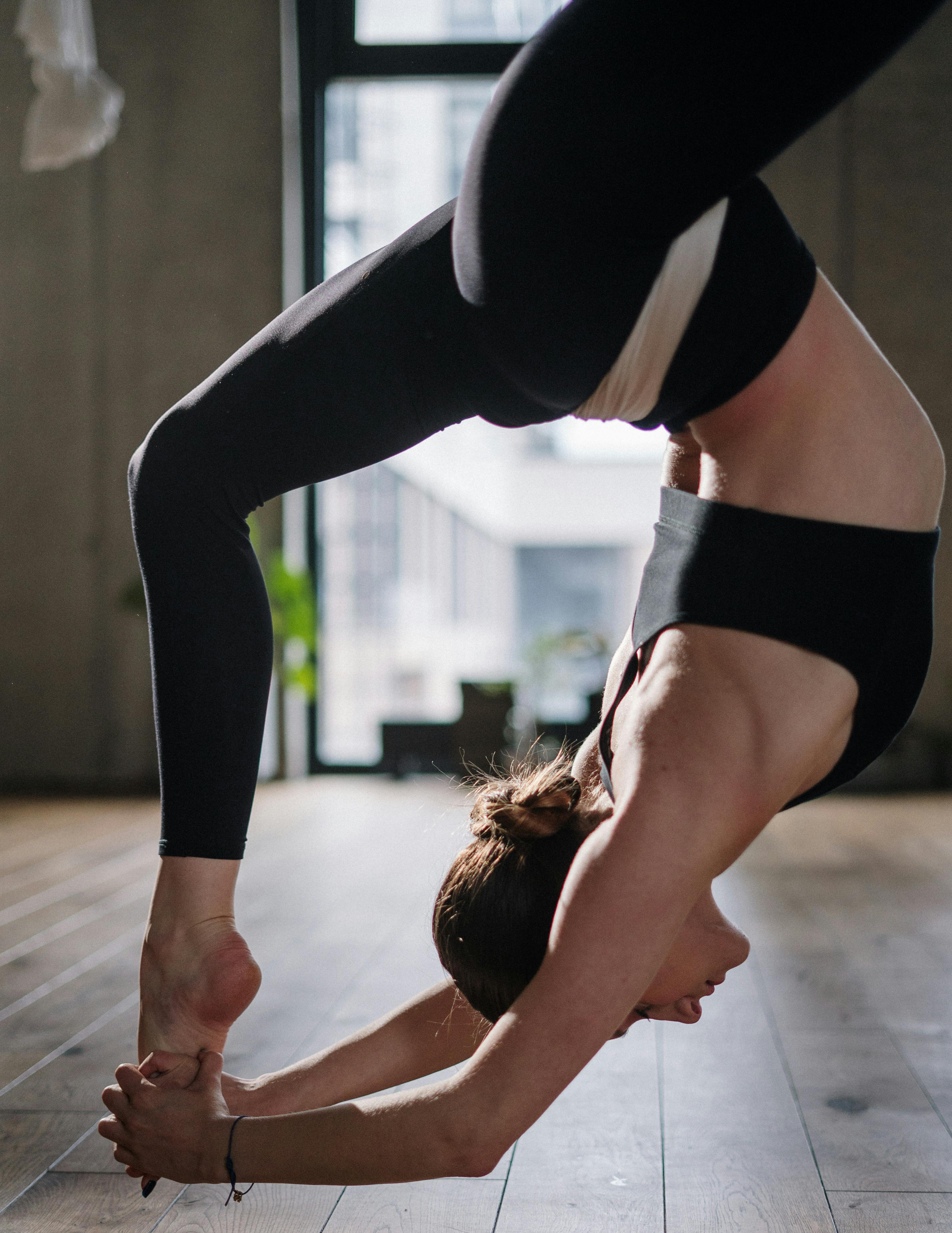Search for yoga retreats
Discover yoga retreats, holidays, and courses from worldwide.
The relentless hum of daily life can leave you feeling depleted and disconnected. The urge to escape the routine, to reconnect with your inner self and rediscover a sense of peace, can become a powerful yearning. If this resonates with you, a yoga retreat might be the answer you've been seeking. But yoga offers so much more than just a temporary escape. It's a practice with roots stretching back millennia, offering a holistic approach to cultivating physical, mental, and spiritual well-being.
A Glimpse into Yoga's Rich History
The origins of yoga are shrouded in the mists of time, with estimates placing its emergence in the Indus Valley Civilization around 3,300 BC. Early references to yoga can be found in ancient Indian texts like the Vedas and the Upanishads. These texts describe yoga as a discipline for attaining enlightenment through physical postures (asanas), breathing exercises (pranayama), meditation, and ethical living.
Over the centuries, yoga evolved and branched into various schools of thought, each emphasizing different aspects of the practice. Here's a deeper dive into some prominent schools:
- Hatha Yoga: This foundational practice focuses on physical postures (asanas) and breathing techniques (pranayama) to purify the body and prepare it for meditation. Hatha yoga forms the basis for many contemporary yoga styles.
- Raja Yoga: Also known as "royal yoga," Raja yoga emphasizes mental discipline and meditation as the path to self-realization. It outlines the eight limbs of yoga (Ashtanga Yoga), a comprehensive framework for holistic living.
- Bhakti Yoga: This path cultivates devotion and love for a higher power. Bhakti yogis practice through chanting, singing, and selfless service.
- Karma Yoga: This path emphasizes selfless action as a means of spiritual liberation. Karma yogis perform their duties with a detached spirit, focusing on the service itself rather than the fruits of their actions.
- Jnana Yoga: This path emphasizes intellectual inquiry and self-knowledge as the path to liberation. Jnana yogis seek to understand the true nature of reality through study and contemplation.

Yoga: A Path Beyond Retreats
While yoga retreats offer a potent immersion experience, the benefits of yoga extend far beyond a dedicated week or month of practice. Here are some ways yoga can enhance your life on a daily basis, with additional details on each benefit:
- Improved Physical Health: Yoga postures (asanas) promote flexibility, strength, and balance. Regular practice can:
- Improve posture by strengthening core muscles and increasing spinal mobility.
- Alleviate back pain by stretching and strengthening the muscles that support the spine.
- Enhance overall fitness by building strength, improving cardiovascular health, and increasing coordination.
- Reduce the risk of injuries by improving flexibility and body awareness.
- Reduced Stress and Anxiety: Yoga incorporates breathing techniques (pranayama) that activate the body's relaxation response. This can help manage stress, anxiety, and even symptoms of depression:
- Diaphragmatic breathing: This deep breathing technique slows the heart rate and lowers blood pressure, promoting relaxation.
- Alternate nostril breathing (Nadi Shodhana): This practice balances the flow of energy in the body, promoting calmness and focus.
- Ujjayi breathing: This rhythmic breathing technique helps to regulate the nervous system and promote mental clarity.
- Enhanced Mental Clarity: Meditation, a core component of yoga, cultivates focus, improves concentration, and promotes a sense of inner peace:
- Mindfulness meditation: This practice involves focusing your attention on the present moment without judgment, fostering a sense of calmness and clarity.
- Mantra meditation: This practice involves repeating a mantra (a sacred word or phrase) to quiet the mind and promote inner peace.
- Greater Self-Awareness: Yoga encourages introspection and mindfulness. Through practice, you can gain a deeper understanding of your thoughts, emotions, and physical sensations:
- Body scan meditation: This practice involves focusing your attention on different parts of your body, becoming aware of any sensations you are experiencing.
- Journaling: Reflecting on your yoga practice and experiences can help you gain insights into your thoughts and emotions.
- Boosted Confidence: Mastering yoga poses and experiencing the positive effects of the practice can enhance your self-esteem and confidence:
- Achieving challenging poses: Overcoming physical obstacles in your yoga practice can boost your confidence in your abilities.
- Noticing improvements: Witnessing your own progress in yoga can improve your self-image and sense of accomplishment.
- Building a supportive community: Connecting with like-minded individuals in yoga classes can foster a sense of belonging and acceptance, further boosting your confidence.
- Stronger Sense of Community: Many yoga studios foster a welcoming and supportive environment. Regularly attending yoga classes can connect you with like-minded individuals who share your passion for yoga:
- Developing friendships: Sharing your yoga practice with others can create lasting friendships and a sense of belonging.
- Finding support: The yoga community can offer encouragement, motivation, and support on your yoga journey.
The Yoga Retreat Experience: A Multifaceted Journey
Now that you've explored the rich history and multifaceted benefits of yoga, let's delve deeper into the world of yoga retreats. Imagine yourself transported to a serene sanctuary, surrounded by breathtaking natural beauty or vibrant cultural immersion. Each morning unfolds with invigorating yoga sessions, deepening your practice under the watchful eyes of experienced teachers. Delicious, nourishing meals crafted with fresh, local ingredients fuel your body, while ample time for relaxation allows you to truly unwind and melt away stress.

But yoga retreats offer so much more than just a scenic escape and a chance to refine your asanas. Here's a closer look at the diverse experiences yoga retreats can provide:
- Deepen Your Yoga Practice with Expert Guidance: Immerse yourself in the practice of yoga under the tutelage of experienced and passionate instructors. These mentors offer personalized guidance, helping you refine your alignment, address any limitations or injuries you might have, and answer questions that may arise during your practice. You'll have ample space and time to explore different yoga styles, experiment with variations, and truly personalize your practice.
- Embark on a Cultural Adventure: Many yoga retreats are held in captivating locations around the world, from the serene beaches of Bali to the majestic mountains of Nepal. These retreats offer the incredible opportunity to combine your yoga practice with cultural exploration and adventure. Immerse yourself in the local customs, savor the regional cuisine, and connect with the unique rhythm of life at your chosen destination.
- Forge Meaningful Connections Within a Supportive Community: Yoga retreats bring together a diverse group of passionate yogis from all walks of life. This shared passion for yoga fosters a sense of camaraderie and connection. You'll have the opportunity to bond with fellow yogis, share experiences, learn from each other, and build a supportive community that extends beyond the retreat.
- Explore Holistic Wellness Practices: Many yoga retreats integrate additional practices that complement your yoga practice and promote overall well-being. These might include meditation sessions, workshops on Ayurveda (the ancient Indian system of holistic medicine), sound healing experiences, or opportunities to connect with nature through hiking or yoga walks.
- Reconnect with Yourself Through Disconnecting from Technology: In today's digital age, feeling constantly tethered to technology is a ubiquitous experience. Yoga retreats offer a much-needed escape, allowing you to disconnect from the constant barrage of notifications and emails. This digital detox facilitates a deeper connection with yourself, fostering a sense of presence and mindfulness that extends far beyond the retreat itself.
Stepping onto the Path of Transformation: Yoga Teacher Training
If your yoga practice has blossomed and you feel an irresistible urge to share your passion with others, then embarking on a yoga teacher training program might be your calling. These intensive programs equip you with the knowledge, skills, and confidence to lead safe, effective, and inspiring yoga classes.
The Yoga Teacher Training Landscape: Choosing Your Path
The world of yoga teacher training programs is as diverse as the yoga styles themselves. Here's a breakdown of some key factors to consider when choosing the right program for you:
- Duration and Certification Levels: Yoga teacher training programs vary in length, ranging from a few weeks (200-hour) to several months (300-hour or more). The duration of the program determines the depth of training and the level of certification you'll receive. Choose a program that aligns with your goals and desired level of commitment.
- Teaching Style and Philosophy: Different yoga teacher training programs emphasize different teaching styles and philosophical approaches. Consider whether you resonate with a more traditional Hatha-based approach, a dynamic Vinyasa style, or a more holistic approach that integrates yoga with other wellness practices.
- Location and Learning Environment: Do you envision a transformative journey in a tropical paradise or a more introspective experience in a secluded mountain retreat? The location and learning environment can significantly impact your experience. Consider factors like climate, accommodation type, and class size when making your decision.
- Teacher Credentials and Experience: Research the instructors leading the yoga teacher training program. Look for teachers with a strong foundation in yoga philosophy, anatomy, teaching methodology, and extensive experience guiding students. Consider their teaching style and whether it aligns with your learning preferences. Reading testimonials from past trainees can also offer valuable insights into the program's quality and effectiveness.
- Cost and Financial Considerations: Yoga teacher training programs vary significantly in cost. Factor in tuition fees, accommodation expenses, travel costs, and any additional materials or equipment required. Determine your budget beforehand and explore financing options if necessary.

Preparing for Your Yoga Teacher Training Journey
Once you've identified the ideal yoga teacher training program, it's time to prepare for your transformative experience. Here are some steps to ensure a smooth and enriching journey:
- Establish a Strong Yoga Foundation: While some programs cater to beginners, having a solid foundation in yoga practice can significantly enhance your learning experience. Regularly attending yoga classes and familiarizing yourself with basic postures and breathing techniques will prepare you for the program's intensity.
- Set Clear Intentions: Reflect on your motivations for undertaking yoga teacher training. Do you aspire to teach yoga professionally, deepen your personal practice, or share your passion with your community? Clearly defined intentions will guide you throughout the program and keep you motivated.
- Gather Necessary Supplies: Most programs will provide a list of essential equipment like yoga mats, comfortable clothing, and notebooks. Review the list carefully and ensure you have everything you need for a successful training experience.
- Embrace the Journey: Yoga teacher training is a transformative experience that can challenge you physically, mentally, and emotionally. Approach the program with an open mind, a willingness to learn, and a commitment to personal growth. Embrace the challenges and celebrate the victories along the way.
The Road Ahead: Beyond Yoga Teacher Training
Successfully completing your yoga teacher training program is a significant accomplishment. However, it's just the beginning of your journey as a yoga teacher. Here are some steps to navigate your path forward:
- Build Your Teaching Experience: Seek opportunities to practice your teaching skills. Volunteer at local studios, offer private classes, or organize workshops in your community. Gaining experience will refine your teaching style and bolster your confidence.
- Continue Learning and Evolving: The world of yoga is vast and ever-evolving. Commit to continuous learning by attending workshops, conferences, or additional yoga trainings. Stay up-to-date on the latest trends and techniques to enhance your teaching repertoire.
- Develop Your Unique Teaching Style: As you gain experience, you'll naturally develop your own unique teaching voice. Don't be afraid to experiment, incorporate your personality, and tailor your classes to cater to the needs of your students.
- Network and Build a Community: Connect with other yoga teachers, studios, and wellness centers. Building a strong network can open doors to teaching opportunities and foster a sense of belonging within the yoga community.
- Give Back to the Practice: Yoga is a tradition passed down through generations. Consider offering scholarships or discounted classes to make yoga accessible to a wider audience. Giving back to the practice ensures its continued growth and empowers others on their own yogic journeys.
By following these steps and embracing the lifelong learning journey, you can establish yourself as a knowledgeable and inspiring yoga teacher, sharing your passion and the transformative power of yoga with others.
In conclusion, yoga offers a multifaceted approach to cultivating physical, mental, and spiritual well-being. Yoga retreats provide a transformative escape to deepen your practice, connect with yourself and others, and explore new cultures. Yoga teacher training equips you with the tools to share this ancient wisdom and inspire others on their yogic journeys. So, take a deep breath, step onto the mat, and embark on your own transformative yoga adventure. May your path be filled with peace, self-discovery, and the joy of sharing the gift of yoga with the world.
Craving More Stories?
Join our ShopYogaRetreats newsletter for the latest updates on thrilling
destinations and inspirational tales, delivered straight to your inbox!
We value your privacy. Your email address will never be shared or published.
 English
English Deutsch
Deutsch Français
Français Nederlands
Nederlands Español
Español

